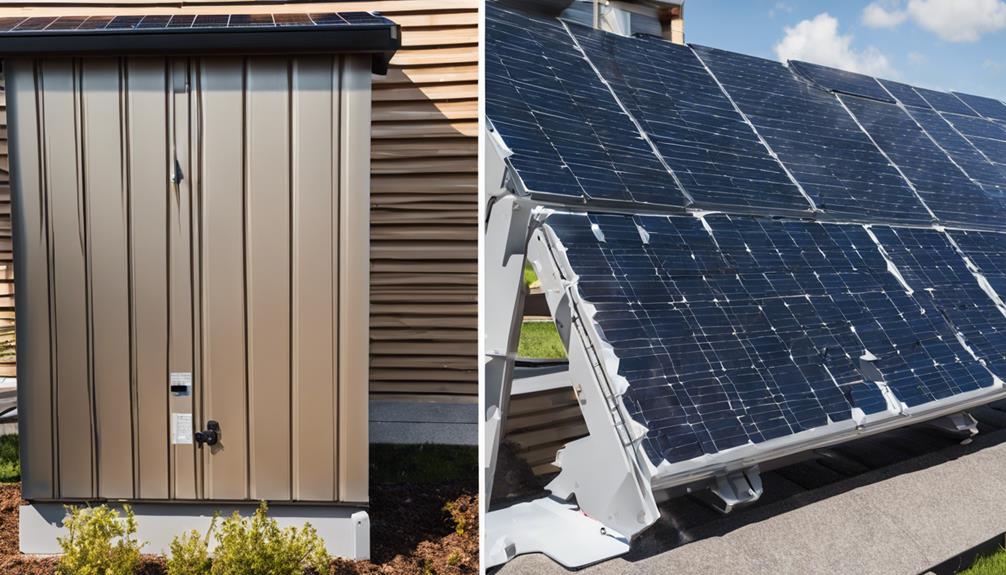
Solar energy has become an increasingly popular choice for homeowners and businesses looking to reduce energy costs and environmental impact. One of the fundamental aspects of solar energy systems is the size of solar panels. In this article, we will explore the average solar panel size, its implications for installation, and how it affects overall energy production.
What is the Average Solar Panel Size?
The average solar panel size typically ranges from 65 to 70 inches in height and 39 to 42 inches in width. Most standard residential solar panels have a power output between 250 to 400 watts. The physical size and power output of solar panels can vary depending on the manufacturer and technology used. Monocrystalline panels tend to be more efficient and smaller in size compared to their polycrystalline counterparts, making them a popular choice for many homeowners. Understanding these dimensions is crucial for proper installation and maximizing energy generation.
Factors Influencing Solar Panel Size
Several factors influence the average solar panel size, including the type of solar technology used, energy needs, available roof space, and local regulations. For instance, if space is limited, homeowners may opt for higher-efficiency monocrystalline panels that can produce more energy in a smaller footprint. Additionally, regional climate conditions can also dictate the choice of solar panel size, as areas with higher sunlight exposure may require fewer panels to meet energy demands. Understanding these factors can help homeowners and businesses make informed decisions about their solar energy systems.
The Benefits of Knowing the Average Solar Panel Size
Knowing the average solar panel size can provide several benefits for potential solar energy users. Firstly, it aids in the planning and design of a solar energy system. By understanding the dimensions of the panels, homeowners can accurately assess their roof space and determine how many panels they can install. Furthermore, it helps in estimating the overall cost of the solar installation, as solar panel size directly correlates with the amount of energy generated and the number of panels required to meet energy needs. This knowledge empowers homeowners to make educated decisions about their solar investments.
How Average Solar Panel Size Affects Energy Production
The average solar panel size plays a critical role in determining the energy production of a solar energy system. Larger panels generally have higher wattage outputs, which means they can generate more electricity over the same period. For example, a system composed of ten 400-watt panels will produce significantly more energy than one made up of ten 250-watt panels. Therefore, understanding the average solar panel size can help homeowners and businesses optimize their energy production, ensuring they achieve maximum efficiency from their installation.
Solar Panel Size and Cost: What to Expect
When considering solar panel size, it’s important to understand the relationship between size, efficiency, and cost. Larger solar panels with higher wattage outputs typically come with a higher price tag. However, they may also offer better value in the long run, as they can produce more energy and reduce electricity bills more effectively. On average, homeowners can expect to pay between $2.50 and $3.50 per watt for solar panel installation, which means the total cost will depend on the total wattage required, influenced by the average solar panel size.
Installation Considerations for Average Solar Panel Size
When planning the installation of solar panels, the average solar panel size must be taken into account for structural support and layout. Homeowners should ensure that their roofs can accommodate the weight and dimensions of the panels. Additionally, local building codes and regulations may specify requirements for installation, including setbacks and spacing. Engaging with a professional solar installer can help navigate these considerations, ensuring that the system is not only effective but also compliant with local laws.
Comparing Solar Panel Sizes: Monocrystalline vs. Polycrystalline
When discussing average solar panel size, it is essential to compare the two main types of solar panels: monocrystalline and polycrystalline. Monocrystalline panels are typically more efficient, producing more power per square foot than polycrystalline panels. This means that monocrystalline panels can be smaller in size while still delivering higher energy outputs. Conversely, polycrystalline panels are generally larger and less efficient, which may require more roof space to achieve the same energy production. Understanding these differences can guide homeowners in selecting the most suitable solar panel type for their specific needs.
Future Trends in Solar Panel Sizes and Technology
As solar technology continues to evolve, the average solar panel size is also likely to change. Innovations in materials and design are paving the way for more compact and efficient solar panels. Future trends may include the development of lightweight solar panels that can be integrated into building materials, such as solar shingles, which would further reduce the average solar panel size required for installations. Staying informed about these trends can help homeowners and businesses make strategic decisions about their solar energy investments, ensuring they benefit from the latest advancements in solar technology.
In conclusion, understanding the average solar panel size is crucial for anyone considering a solar energy installation. By grasping the factors that influence size, the implications of energy production, and the cost considerations, potential users can make informed decisions that will lead to effective and efficient solar energy systems. As technology continues to advance, homeowners and businesses can look forward to even more opportunities for optimizing solar energy use.





